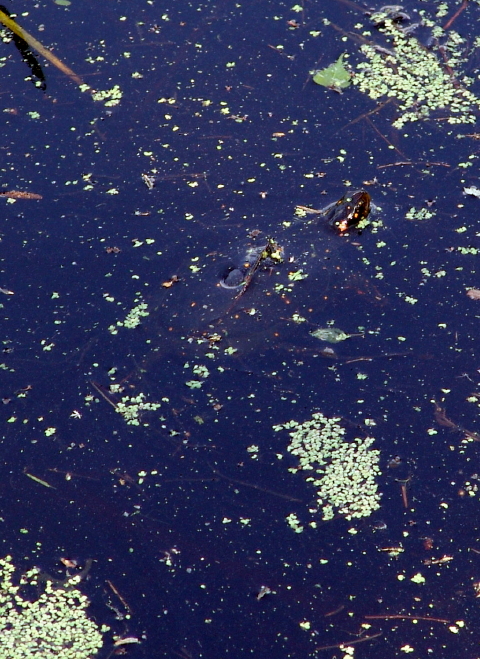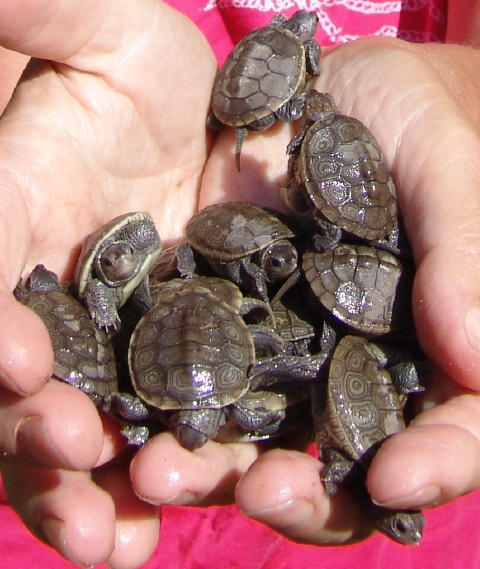
Allens Pond Diamondback Terrapin Hatchlings
Mass Audubon’s Allens Pond Wildlife Sanctuary in Westport, Massachusetts offers good habitat for threatened diamondback terrapins, including abundant nesting areas within its expansive dunes and a rich salt marsh nursery. The Turtle Journal team in partnership with the Allens Pond staff has been monitoring this area for several years with the goal of locating and protecting terrapin nests to reverse the population decline in Buzzards Bay. The sprawling geography of Allens Pond, fragmented by private cottages and roadways, creates a significant challenge for researchers. In this exciting case, the quest to save baby terrapins was also handicapped by nighttime darkness.
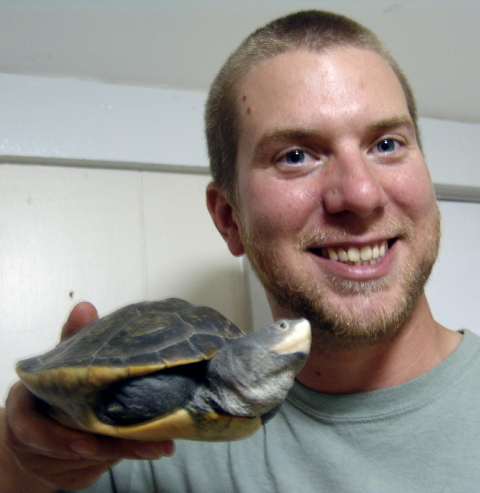
Pete Deichmann and Female Terrapin #6
As Allens Pond coastal waterbird monitor Pete Deichmann patrolled the dunes and shoreline on the evening of June 20th, he caught sight of a female terrapin scratching the sand around dusk. Pete immediately called the Turtle Journal team via cell phone. Sue Wieber Nourse responded to Pete’s call and she sped to Westport from Marion as darkness enveloped the South Coast. Before venturing into the night to locate the nest in the deserted coastal dunes, Sue documented the female terrapin that Pete had hand-captured. A new capture, Terrapin #6 from Allens Pond was blind in her left eye. She weighed 969 grams after dropping her eggs, and her carapace (top shell) measured 7.25 inches long.
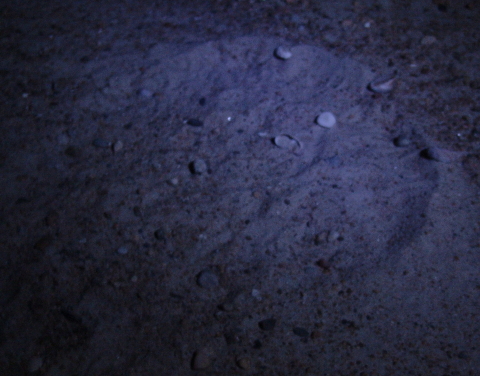
Finding Diamondback Terrapin Nest in the Dark
Now comes the challenging part of this night’s adventure. A waxing gibbous moon had risen over Buzzards Bay offering an exquisite backdrop, but little illumination, to guide the night’s rescue. Based on experience, Sue knew predators would be fast on the prowl, and the longer it took to recover these vulnerable eggs, the more likely hungry mammals would reach them first. Pete had found Terrapin #6 on a high tide nesting run in an isolated sandy overwash. Even knowing its general location, finding the exact spot of the disguised nest itself among acres of homogenous sandy dunes … at night, by flashlight alone … would be a needle-in-a-haystack trick. Yet, with Sue’s turtle expertise and Pete’s knowledge of the terrain, they discovered the undisturbed nest before predators reached the site.

Saving Rare Terrapin Nest by Moonlight
Nightfall magnifies the magic of turtle rescues. The unseen surf thunders in the background. Stars shimmer in the darkness, and the glow of a gibbous moon transforms a once familiar landscape into haunting mystery with hints of wispy shadows.  Under dim moonlight Sue probed the nest blindly with her fingertips; she gently located the egg chamber to confirm a clutch of freshly laid terrapin eggs. Sue assessed that these eggs were extremely vulnerable to both tidal overwash and depredation with a near zero probability of survival.

Fourteen Perfect Diamondback Terrapin Eggs
Sue harvested 14 pinkish eggs, gently packed them in moist sand for safe transportation and brought them to the Turtle Journal headquarters. Sue dug a nest in the TJ rescue garden similar to the one that Terrapin #6 had dug at Allens Pond. Sue gently filled the nest with the eggs and the natal sand she had retrieved from Allens Pond. She covered the nest with a predator excluder cage to ensure that these eggs could incubate in perfect safety, completing the nest relocation around midnight.

Allens Pond Terrapin Babies Begin to Pip
On September 10th, after 82 days of incubation, Don Lewis and Sue Wieber Nourse checked on the progress of these babies. They discovered that several of the eggs had “pipped;” that is, the hatchlings had scratched through the eggshell with their egg tooth, and had begun shredding the egg with their powerful tiny claws. Don and Sue reburied the nest because it usually takes three to five days after pipping for the hatchlings to emerge.

Allens Pond Terrapin Babies Hatch
Sure enough, on the morning of Lucky Friday the 13th, three days later, the Allens Pond babies dug an emergence hole to the surface and scrambled for the sunshine. Of the 14 eggs, every one had successfully hatched. A 100% hatch rate!
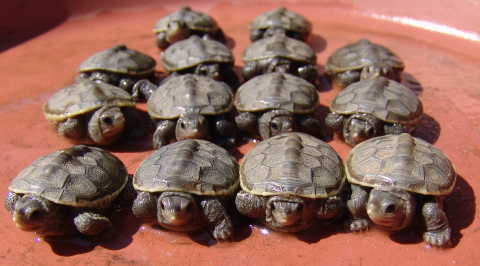
Newly Born Allens Pond Diamondback Terrapin Hatchlings
On September 19th, these 14 beautiful, healthy babies will return to Allens Pond for release. They will have beaten most of the odds against survival.  As many as 95% of terrapin nests are destroyed by predators. Of the few eggs that naturally hatch, perhaps 1-in-250 to 1-in-1000 survive to adulthood. Most babies are picked off by predators as they try to reach the safety of their nursery habitat where they must hide for their first three years of maximum vulnerability. So, these lucky Friday the Thirteenth babies have been given a huge boost to survival and the terrapin population of Buzzards Bay has been equally helped with a new generation of healthy recruits.




